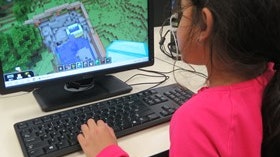Homepage
•
Learning Library
•
Blog
•
Minecraft: A primer for teachers
Expand breadcrumbs
Expand breadcrumbs
- Learning Library
- Blog
- Minecraft: A primer for teachers
- Homepage
- •
- Learning Library
- •
- Blog
- •
- Minecraft: A primer for teachers
Minecraft: A primer for teachers
By Karen Richardson
November 20, 2014








